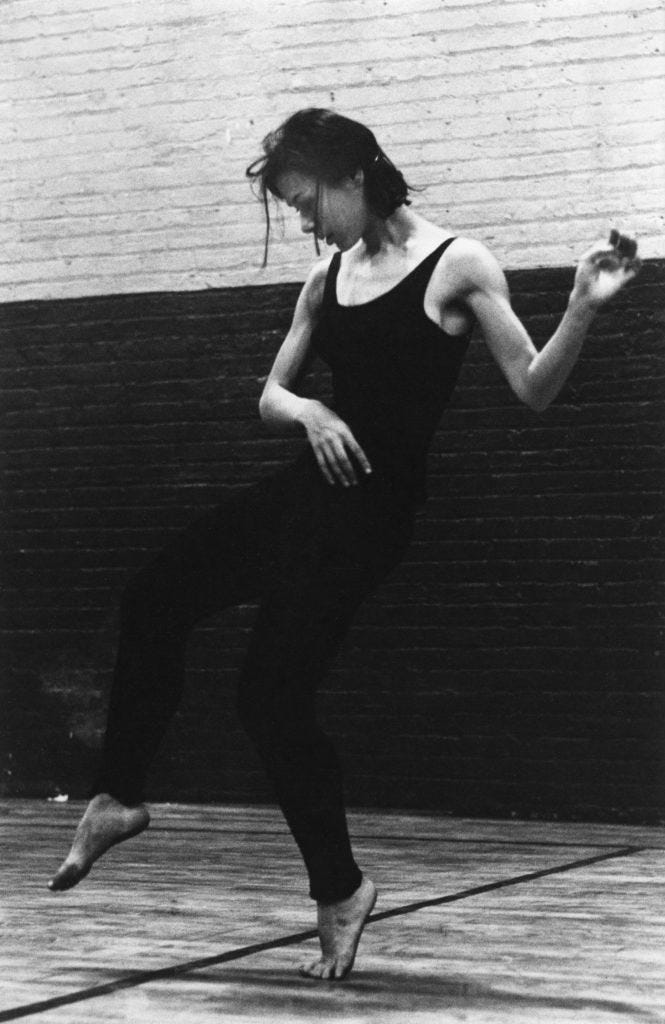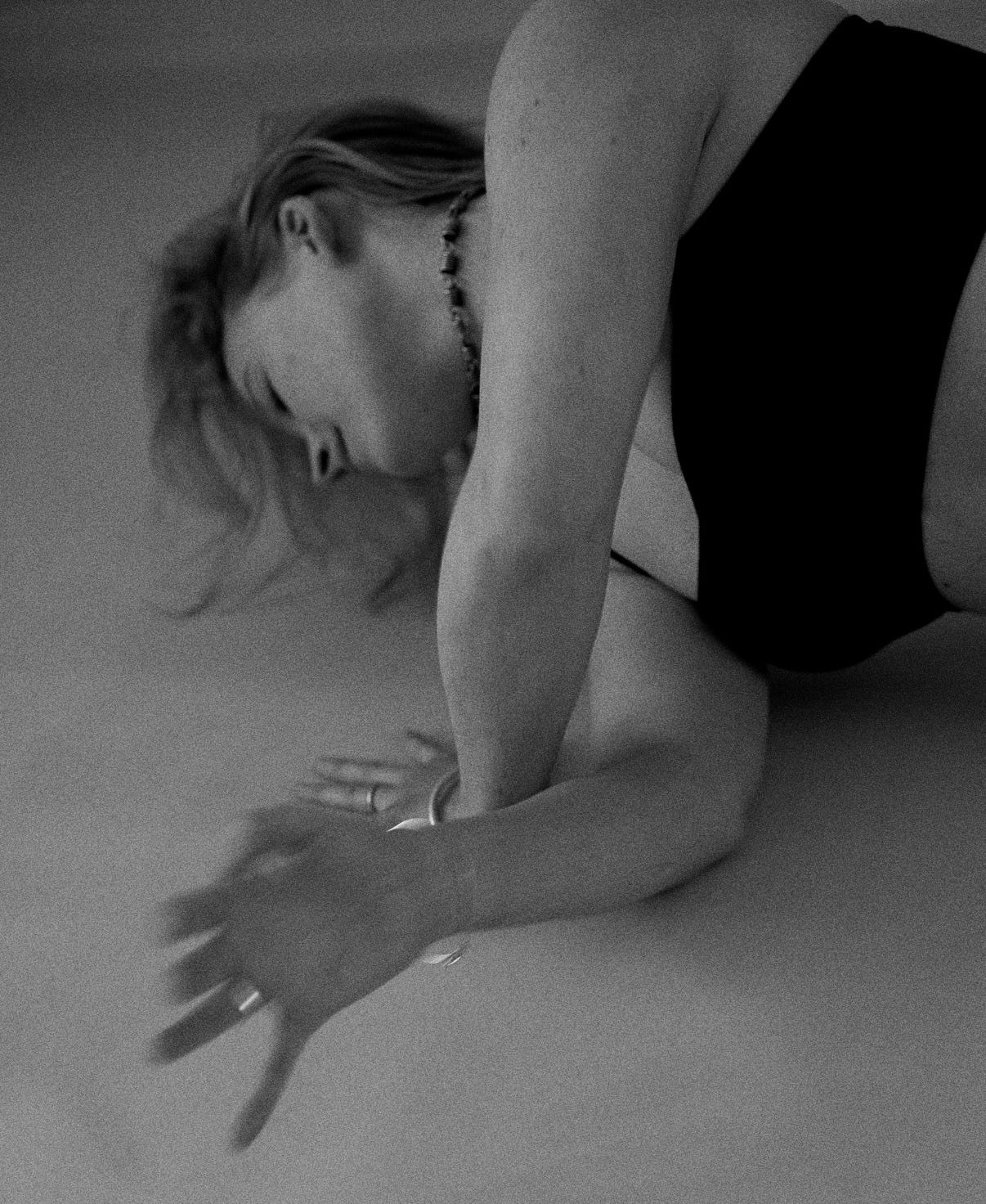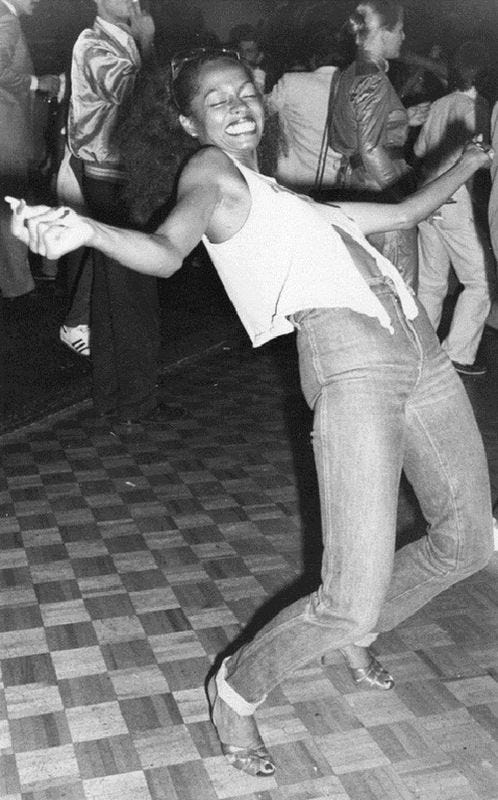The AC hums at full blast. Sweat beads congregate on my upper lip. The bougainvillea outside is a bright, sweet pink. My cheeks are a close second.
I move with my eyes closed, trying to let myself be moved, rather than be the mover. Kara Duval sings through my laptop speakers be a noodle! I try to be a noodle.
I’ve always hated dancing, slipping seamlessly into Ubers and slithering to the side as the beat quickens. It’s meant to feel organic, but it’s sticky. Dry and unnatural—a well of dissociation, an estrangement from my limbs.
There was a time when I liked to dance. I was five. It was fun, or I remember it being fun. At that age, I only wore dresses and There was a semblance of blasé freedom — embodiment was the only choice.
Childhood gave way to adolescence, the culmination of which was, of course, the school dance. A bystander would have seen me haphazardly swaying alongside other pre-pubescent teenagers, completely unsure what to do with my arms. As we filed out of the gymnasium into the early evening light, I concluded that I did not—in fact—enjoy dancing.
As a young adult, I threw myself into the centrifuge of regimented movement—spaces where I was told exactly how to manipulate my limbs. This, not that. Movement translated to morality. Individualism gave way to uniformity—twenty bodies in a room, different but indistinguishable in their movements.
My body wasn’t me, I realized. It’s a tool! A thing to be manipulated, contorted, and then quieted. Disembodiment was at full throttle.
Three months into lockdown, I grow tired of the park steps. Days stretch out before me in an endless monotone. I roll out my mat in the corner of my matchbox city bedroom. I cue up The Class by Taryn Toomey — a cult favorite, self-appointed transformative movement experience.
I latch the windows, hoping my roommates won’t catch the loud exhales emerging from my room. I wiggle, shake, and cringe. I try to let go, but I can’t. It feels forced. Cliché. I cancel my free trial and shut my laptop.
I scramble over rocks as the sun settles down near the horizon. A droplet of sweat escapes between my shoulder blades. Earlier that week, I roll my eyes when a neighbor invites me to an ecstatic dance ritual. No chance. But craving connection, I caved. Isolated in my small farmhouse, I was free-falling into my psyche.
Pressing my feet into the sand, I will myself to be okay. To feel just a hint of safety. I stand in the back while people begin to wriggle and shake, their bodies expanding and contracting wildly. There is no coordination. No rhythm. They move through the space like water.
Dread swelled. A rising tide of angst —my limbs unshakeable in the face of self-doubt, my mind screaming. That’s the funny thing about safety: You cannot will it to be.
Each time I’ve ventured into the body, my mind reels me back.
It’s not safe here, it hisses.
My western ideals held up my mind like a shiny prize. Intellect over intuition. Facts over feeling. Knowledge never rusts, but bodies do.
So it was an easy decision — to occupy my mind and detach from my physical home. It was celebrated. Push through. Mind over matter. A subtle agreement to view my body as an object—a belonging, a bag of bones, something to be commandeered.
And I went willingly. The mind is more sterile— not always tidy, but familiar. There’s a predictability to it; a relatively paved path to taming it. Years of therapy have shown me spewing and wrangling with the same stories. Battling with my narratives felt more accessible and, more than once, saved me from myself.
But emotions don’t speak. They exist only in the language of the body—a dialect we’ve long refused to translate. By refusing the nuanced and complex nature of our emotions, we do the same to our bodies. We beckon them to push through burnout, starve into unnatural forms, and shapeshift to hold trauma, oppression, and pain. We don’t ask, we tell.
To overcome something, you have to cut the cord, disconnecting from its calls altogether.
Somatic psychology is really just an elitist term for being in the body.
Healing in the body.
Inviting the body back into our being.
Conceptually, it clicked. But when it came to practice, I dragged my whole being across the floor to avoid it. Tuning into the body was unnatural. How could I get quiet enough to listen for something I had silenced for so long?
Our re-introduction has been slow—years in the making. Not rowdy or grand, but a homecoming of sorts. Discomfort melted into indifference. Indifference transfixed to appreciation. A reluctant practice turned into a craving. It’s an uphill battle, but one that I’m in service of.
To quote Rosie Pinks,
We’ve been looking for a wellness silver bullet…but in fact what I needed were those tiny stupid habits, done over and over. The things your ancestors did without trying or thinking, because there was no other way of doing things.
My tiny stupid habits are my homecoming.
Returning to the roots of ecstatic dance with Kara Duval on The Range. Shuddering, shaking, and bouncing along — self-consciousness and all. Sitting down to breathe. Releasing regimented, one-size-fits-all movement for the sake of something better, something more human. Feeling the sun on my skin. Walking around the block. Laying down on the floor with The Daily Rest. Listening to pain. Noticing when I’m hungry, thirsty, or tired. Starting when I have the energy. Stopping before I’m exhausted. Listening to the call and recognizing what feels Good. It’s not groundbreaking, but it can be revolutionary.
And there’s a truth waiting for us: We are our bodies. They are not inanimate objects to be dragged around or accessories to our brains. Just like the mind, they are the very fabric of our being.
Without them, we deny an essential part of what it means to be human—what it means to experience our existence at its most fragrant, most sensual—what it means to be informed and guided by our bodily experiences.
When we refuse the inquiry, we forego half the information, and who wants to live only half-knowing?
None of this is new, as the field of Psychology might have us believe.
Somatic work has been thrust into the spotlight, but the wisdom is ancient. Indigenous in nature and laced with countless spiritual traditions, then repackaged and sold as something new.
As research settles on the quote-on-quote measurable benefits, somatics appears in the market as a product rather than a way of being. You can’t sell tiny stupid habits, but you can sell a course. Guides can and should create safe spaces for embodiment, but we should honor where the practices actually come from—not from Taryn Tooney, that’s for sure.
And the trends miss the point. Embodiment isn’t a fix, a solution, or an escape. It won’t silence our anxiety any more than it will absolve our pain. It’s a pathway for healing, but not a shortcut. It can offer us increased capacity to be with and listen to—nothing more, nothing less.
I didn’t want to roll out my mat. I did it anyway.
I pulled up The Range and selected a class titled Snail Behavior.
I moved and unfurled through space like water. I stopped perceiving myself, if only for a few minutes. I let it be fun, blasè freedom. My mind didn’t scream, and my limbs felt light.
And when I finished, there I was. A little closer to myself.
until next time,
Amy
artists, movers, and naturalists leading the Way
The Range with Kara Duval (especially Jitterbug)
The Daily Rest Studio with Emmie Rae (especially this class)
Tiny Stupid Habits by Rosie Pink (cited in this substack^^)
Braiding Sweetgrass (a book about plants, but covered cover to cover with Indigenous wisdom about being in touch with nature and our bodies)
The Wisdom of Your Body by Hillary Mcbride (a portal to the body)
The Range by Kara Duval
I could write a whole substack about the Range. I probably will. Its movement swirled with humanness and hints of functionality and flirtation. It’s snail-like, comforting, and a damn good time. This wasn’t really a cohesive description so check it out for yourself. Kara walks me back to my body nearly every day.
Just a crucial watch







I loved reading this so much Amy🌸
“A reluctant practice turned into a craving.” Wow yes. Thank you